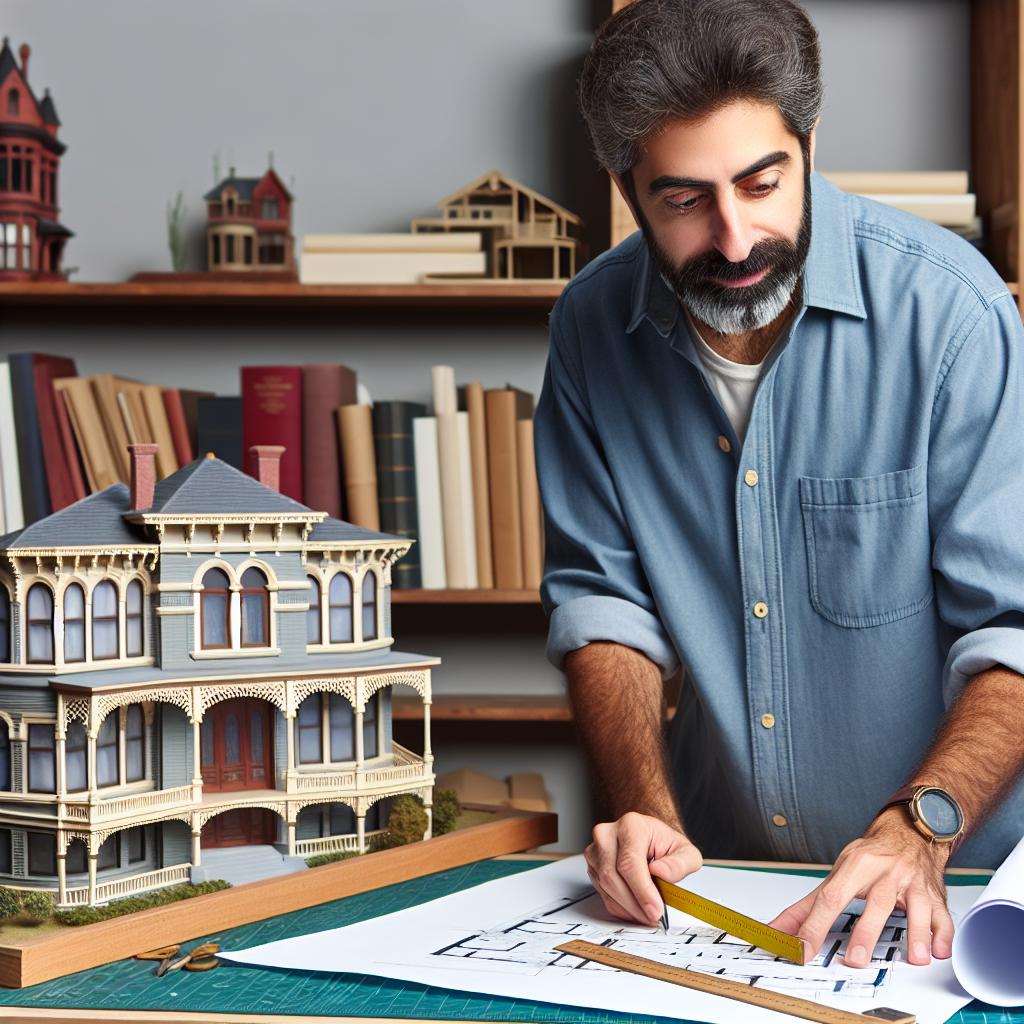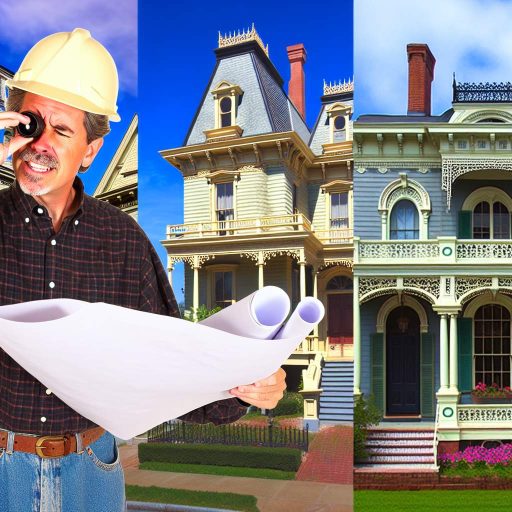The Historical Significance of Luxury Homes in American Culture
Origins and Evolution
Luxury homes in the USA showcase the country’s distinct cultural evolution.
They often represent wealth, power, and social status within various historical contexts.
Initially, these homes derived inspiration from European styles.
Architectural trends transformed as America developed its unique identity.
Architectural Influences
Luxury homes reflect a blend of different architectural influences.
Colonial, Victorian, and Georgian styles prominently feature in some designs.
During the Gilded Age, opulence characterized many affluent residences.
Architects such as Richard Morris Hunt and Stanford White created iconic structures.
Their work signified a shift toward Americanized architecture.
Symbol of Power and Prestige
Historically, luxury homes served as symbols of wealth and influence.
Many were built by prominent industrialists and politicians.
These homes often hosted influential social events and gatherings.
Consequently, they became sites of significant cultural interactions.
Regional Variations
The design of luxury homes varies significantly across different regions.
Coastal areas often enjoy Mediterranean or beach-inspired styles.
Inland cities may showcase traditional American Craftsman or Prairie styles.
Regions like New England are known for their Colonial revival homes.
Impact on Modern Luxury Real Estate
The legacy of historic luxury homes continues to influence modern architecture.
Contemporary luxury homes often incorporate classical elements.
Designers aim to balance tradition with modern technological advancements.
Preservation efforts also play a crucial role in maintaining historical integrity.
This approach fosters appreciation for architectural heritage across generations.
Key Architectural Styles of Historic Luxury Homes
Colonial Revival
Colonial Revival architecture emphasizes symmetry and classic proportions.
It often features brick exteriors, gabled roofs, and elegant columns.
This style draws inspiration from early American colonial architecture.
Queen Anne
Queen Anne style is characterized by intricate details and asymmetrical facades.
These homes often showcase turrets, wraparound porches, and decorative shingles.
This style became popular in the late 19th century.
Georgian
Georgian architecture showcases simplicity and accuracy in design.
It often includes a center hall with flanking rooms on either side.
This style prioritizes balanced proportions and symmetrical shapes.
Italianate
Italianate homes are known for their distinctive ornate cornices and arched windows.
These structures frequently feature tall, narrow proportions and decorative brackets.
Italianate design flourished during the mid-19th century across the U.S.
Craftsman
Craftsman architecture celebrates handcrafted details and natural materials.
It allows for open floor plans, built-in furniture, and extensive woodwork.
This style emerged in the early 20th century as part of the Arts and Crafts movement.
Art Deco
Art Deco architecture exudes luxury and glamour through geometric designs.
It incorporates rich colors and metallic finishes to create a striking appearance.
This style spread widely in the 1920s and 1930s, symbolizing modernity.
Mid-Century Modern
Mid-century modern design emphasizes clean lines and functional spaces.
Large windows connect indoor and outdoor living areas seamlessly.
This style reflects the post-World War II era’s optimism and innovation.
Understanding the Role of Social Status in Historic Home Design
The Influence of Wealth on Architectural Styles
Wealth significantly influences the design of historic luxury homes.
Affluent homeowners often desired elaborate designs to showcase their social standing.
This led to the adoption of exquisite architectural styles, such as Gothic Revival and Neoclassicism.
Furthermore, homeowners invested in unique materials to enhance their homes’ appearance.
These choices reflected both personal taste and societal expectations.
Symbolism in Home Features
Many design elements symbolize wealth and status in historic homes.
Grand staircases often served as a focal point, signifying entry into a world of luxury.
Expansive windows provided ample light, also showcasing the homeowner’s wealth.
Additionally, decorative ceilings and intricate moldings were common luxuries.
These features not only delighted the eye but also conveyed power and prestige.
The Role of Social Trends
Social trends greatly shaped home design throughout history.
Different eras emphasized various styles, often reflecting the beliefs of that time.
For example, the Arts and Crafts movement highlighted simplicity and craftsmanship.
Conversely, the Roaring Twenties embraced extravagance in home design.
These shifts showed how homes became mirrors of cultural values and social aspirations.
Regional Variations in Luxury Homes
Regional differences also play a significant role in home design.
In the Northeast, classic Colonial homes dominate the landscape.
Meanwhile, the Southwestern United States showcases adobe-style constructions.
Moreover, the Southern states often feature expansive plantation-style homes.
These variations reflect local resources, climate, and cultural influences.
The Impact of Notable Architects
Many renowned architects shaped the landscape of luxury home design.
Figures like Frank Lloyd Wright and Richard Morris Hunt left lasting legacies.
Their innovative designs reflected both personal vision and social aspirations.
Additionally, they often catered to wealthy clients, ensuring homes met high standards.
Today, their works continue to inspire architects and homeowners alike.
Uncover the Details: Exploring Sustainable Design Practices In Penthouse Suites Across The USA
Preservation Challenges and Efforts for Historic Luxury Properties
Common Preservation Challenges
Historic luxury homes face numerous preservation challenges.
Age-related deterioration often impacts structural integrity.
Additionally, outdated building codes can complicate renovations.
Natural disasters frequently threaten these properties as well.
Moreover, financial constraints limit necessary restoration efforts.
Many owners struggle to find skilled craftsmen experienced with historic materials.
Consequently, preservation often requires specialized knowledge.
Community Engagement and Support
Community engagement plays a vital role in preservation efforts.
Local heritage organizations often mobilize volunteers for restoration projects.
Additionally, public awareness campaigns foster appreciation for historic homes.
Such initiatives can lead to increased funding and grants.
Community support strengthens advocacy for preservation efforts.
Government Programs and Incentives
Various government programs support the preservation of historic luxury homes.
Tax incentives often entice property owners to invest in restoration.
Grants from federal and state programs provide crucial funding.
Additionally, local governments may offer low-interest loans.
These programs help ensure the longevity of these historic assets.
Innovative Restoration Techniques
Innovative restoration techniques are now transforming preservation efforts.
Advanced technology aids in assessing structural issues effectively.
For instance, 3D scanning can accurately document existing conditions.
Furthermore, contemporary materials can enhance durability while maintaining aesthetics.
Adaptive reuse enables properties to serve new functions sustainably.
Case Studies of Successful Preservation
Several successful preservation efforts showcase effective strategies.
One notable example is the restoration of the Olmsted Brothers’ estate.
This project utilized both public funding and community support.
Another inspiring case is the Montpelier estate’s adaptive reuse into a museum.
Such projects exemplify how collaboration can lead to successful outcomes.
Gain More Insights: Exploring Investment Strategies In Gated Luxury Communities Across The USA
Influences of European Architecture on American Luxury Homes
The Italianate Style
The Italianate style emerged in the United States during the mid-19th century.
This style drew inspiration from the villas of Italy.
Distinctive features included low-pitched roofs and tall, narrow windows.
Moreover, decorative cornices added elegance to these homes.
Notable examples include the homes in San Francisco’s Nob Hill.
The Georgian Revival
The Georgian Revival architecture reflects America’s colonial roots.
This style showcases symmetry and classic proportions.
Brick facades often dominate, accompanied by elegant doorways.
Additionally, columns can be found adorning the entrances.
Many Georgian Revival homes represent the grandeur of American history.
French Influence: Beaux-Arts Architecture
Beaux-Arts architecture gained popularity in the late 19th century.
This style borrowed from classical French designs.
It features grand staircases, elaborate moldings, and intricate details.
Furthermore, Beaux-Arts homes often incorporate large gardens.
Prominent examples can be seen in the mansions of Newport, Rhode Island.
The Arts and Crafts Movement
The Arts and Crafts movement emphasized craftsmanship in design.
This movement arose as a reaction to industrialization.
Homes from this period often utilize natural materials.
Exposed wooden beams and handcrafted details are common characteristics.
Prominent architects include Frank Lloyd Wright, who embraced this style.
Contemporary European Trends
Today, American luxury homes often reflect contemporary European styles.
Modernism and minimalism find their way into new designs.
These homes favor open spaces and functional layouts.
Natural light plays a significant role in their appeal.
Consequently, they present a blend of luxury and simplicity.
See Related Content: Exploring The Benefits Of Living In Waterfront Communities

The Impact of Historic Luxury Estates on Modern Real Estate Trends
Preserving Heritage in Real Estate
Historic luxury estates offer a glimpse into architectural splendor.
They preserve cultural heritage and local history.
As a result, they attract buyers interested in unique properties.
This interest drives a growing market for historic restoration projects.
Aesthetic Influence on New Developments
Design elements from historic homes influence new builds today.
Modern architects often incorporate classic styles in their designs.
Features like grand staircases and intricate moldings reappear in contemporary homes.
This trend enhances the appeal of newly constructed luxury homes.
Investment Value of Historic Estates
Investing in historic luxury estates has financial benefits.
These properties often appreciate significantly over time.
Buyers see them as both homes and investment opportunities.
This trend underscores the value of preserving historic homes.
Societal Impact of Luxury Estates
Luxury estates significantly shape community identity and culture.
They promote tourism and enhance local economies.
Furthermore, historic estates often become community landmarks.
As a result, they foster a sense of pride among residents.
Sustainability in Historic Real Estate
Restoration of historic homes often emphasizes sustainability.
Many projects focus on eco-friendly materials and practices.
Consequently, restored homes offer modern amenities without sacrificing character.
This balance attracts eco-conscious buyers in the luxury market.
See Related Content: Exploring Benefits Of Owning A Luxury Mountain Retreat Property In The USA
Personalization and Modern Updates in Historic Luxury Homes
The Importance of Personalization
Personalization enhances the unique character of historic luxury homes.
Homeowners seek to reflect their tastes and lifestyles.
Custom features transform spaces into personalized sanctuaries.
Personalized designs often incorporate modern aesthetics.
For instance, sleek lines and minimalist designs can coexist with vintage elements.
Furthermore, personalized elements can include bespoke furniture or custom art installations.
Integrating Modern Technology
Modern updates bring historic homes into the 21st century.
Homeowners often install smart home technologies for convenience.
This includes automatic lighting, climate control, and security systems.
Moreover, high-efficiency appliances reduce environmental impact.
Integrating technology respects the home’s historic character while enhancing functionality.
Preserving the Architectural Integrity
Modern updates should respect the home’s architectural style.
Retaining original features maintains the historic charm of luxury homes.
For instance, preserving moldings or mantels ensures authenticity.
Homeowners often collaborate with experts in historic preservation.
This collaboration ensures that renovations align with preservation standards.
Trends in Modernization
Current trends emphasize open floor plans in historic homes.
This allows for better flow between spaces while keeping essential areas cozy.
Natural light is also prioritized to enhance the ambiance.
Many opt for larger windows or skylights.
Outdoor living spaces become extensions of the home.
Landscaped gardens and patios integrate nature and relaxation.
Showcasing Famous Historic Luxury Homes Across the USA
Introduction to Historic Luxury Homes
Historic luxury homes embody the architectural designs of their time.
They reflect the cultural, social, and economic influences of their eras.
These homes attract many visitors due to their grandeur.
The Breakers in Newport, Rhode Island
The Breakers is a prominent Gilded Age mansion.
It showcases the opulence of the Vanderbilt family.
This house features stunning Italian Renaissance architecture.
The lavish interiors include intricate moldings and gilded details.
Visitors often admire its picturesque cliffside location.
The Biltmore Estate in Asheville, North Carolina
The Biltmore Estate is the largest privately-owned home in America.
This estate was built by George Washington Vanderbilt II.
It boasts a blend of Châteauesque architecture and scenic gardens.
Guests enjoy tours that highlight its rich history and artwork.
Additionally, the estate includes a winery and expansive grounds.
Monticello in Charlottesville, Virginia
Monticello is the historic plantation of Thomas Jefferson.
It exemplifies neoclassical architecture and innovative design.
The home features Jefferson’s personal touches and ideas.
The surrounding landscape reflects his love for gardening.
Visitors appreciate both its historical significance and beauty.
Hearst Castle in San Simeon, California
Hearst Castle is a stunning estate built by media magnate William Randolph Hearst.
This mansion combines Mediterranean Revival architecture with lavish decor.
Its grand halls and opulent rooms often amaze guests.
Visitors enjoy breathtaking views from atop the hills.
The estate also features beautiful pools and gardens.
The Selma Mansion in Norristown, Pennsylvania
Selma Mansion is a unique example of Georgian-style architecture.
This historic home is known for its intriguing ghost stories.
Visitors are drawn to its thoughtful design and picturesque surroundings.
The estate reflects the lifestyle of its wealthy original owners.
Today, it hosts various events and private gatherings.
Additional Resources
Gilded Age Glamour: Visiting the Historic Estates of Savannah
The Historic Cavalier Hotel and Beach Club | Virginia Beach’s Iconic …




